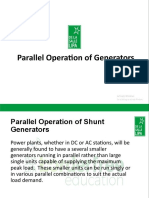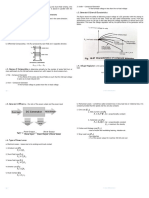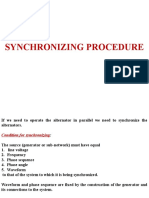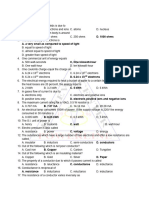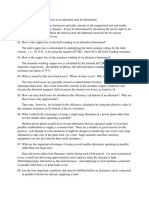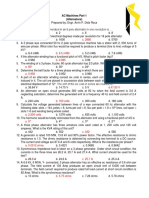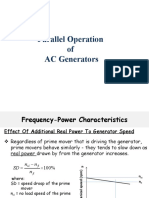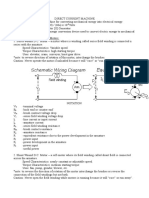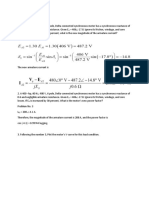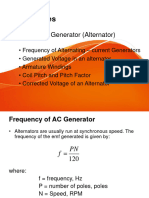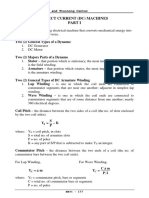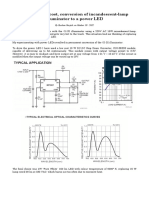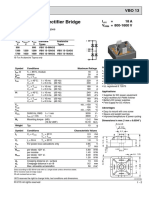0% found this document useful (0 votes)
696 views24 pagesGenerators in Parallel Operation
Three generators operating in parallel have the following advantages: continuity of service if one generator breaks down; efficiency through load sharing as demand increases and decreases; and maintenance through inspecting generators when they are not supplying load. To connect a generator to an existing parallel system, its speed and voltage must match the bus bars before closing the main switch. Load is then shared based on the generators' ratings, with the higher rated generator taking more load to maintain a constant bus voltage. An equalizer bus bar is used with series generators to share load evenly.
Uploaded by
Rianne AguilarCopyright
© © All Rights Reserved
We take content rights seriously. If you suspect this is your content, claim it here.
Available Formats
Download as PPTX, PDF, TXT or read online on Scribd
0% found this document useful (0 votes)
696 views24 pagesGenerators in Parallel Operation
Three generators operating in parallel have the following advantages: continuity of service if one generator breaks down; efficiency through load sharing as demand increases and decreases; and maintenance through inspecting generators when they are not supplying load. To connect a generator to an existing parallel system, its speed and voltage must match the bus bars before closing the main switch. Load is then shared based on the generators' ratings, with the higher rated generator taking more load to maintain a constant bus voltage. An equalizer bus bar is used with series generators to share load evenly.
Uploaded by
Rianne AguilarCopyright
© © All Rights Reserved
We take content rights seriously. If you suspect this is your content, claim it here.
Available Formats
Download as PPTX, PDF, TXT or read online on Scribd
/ 24

